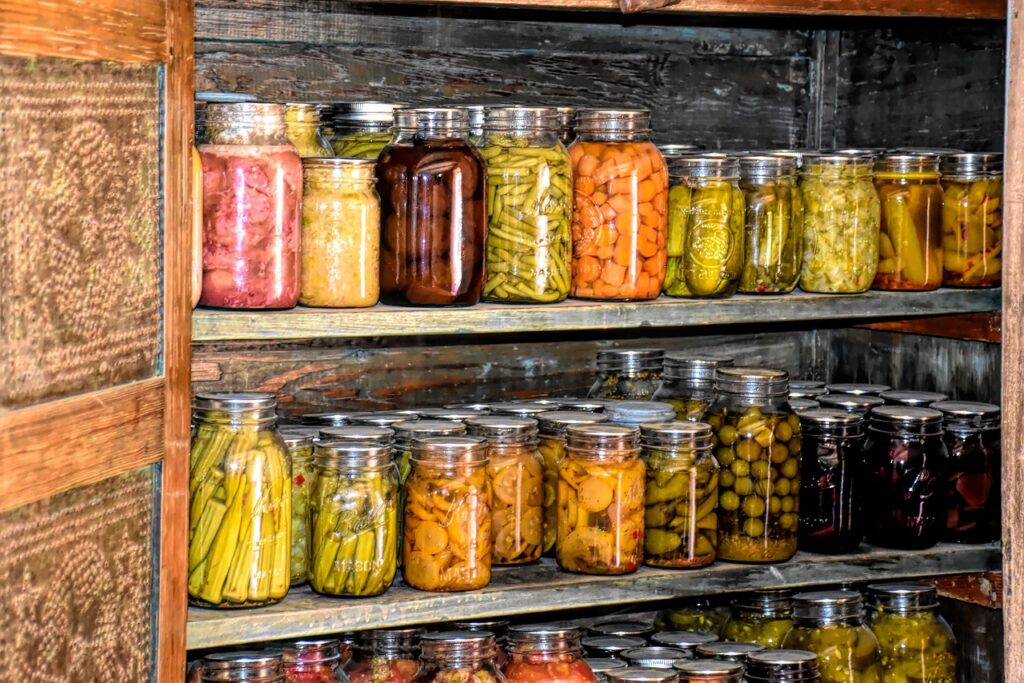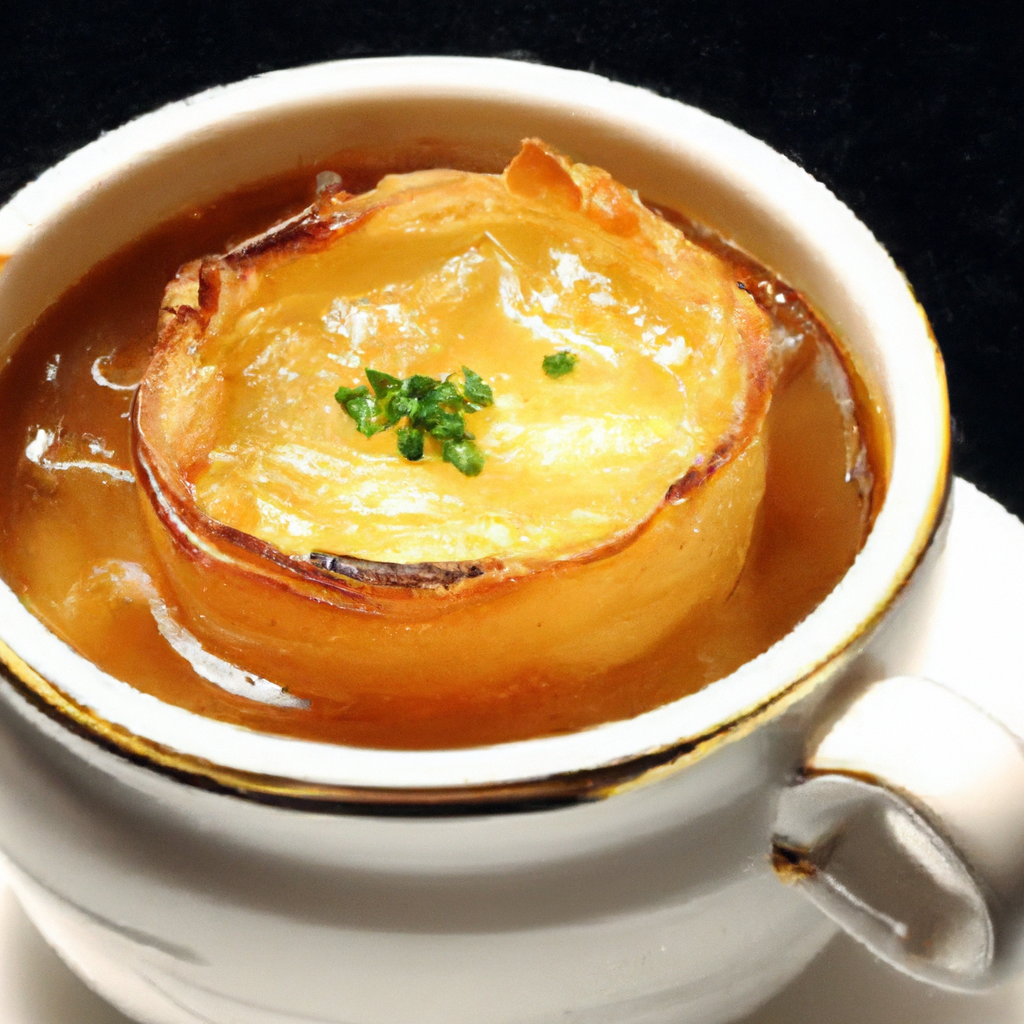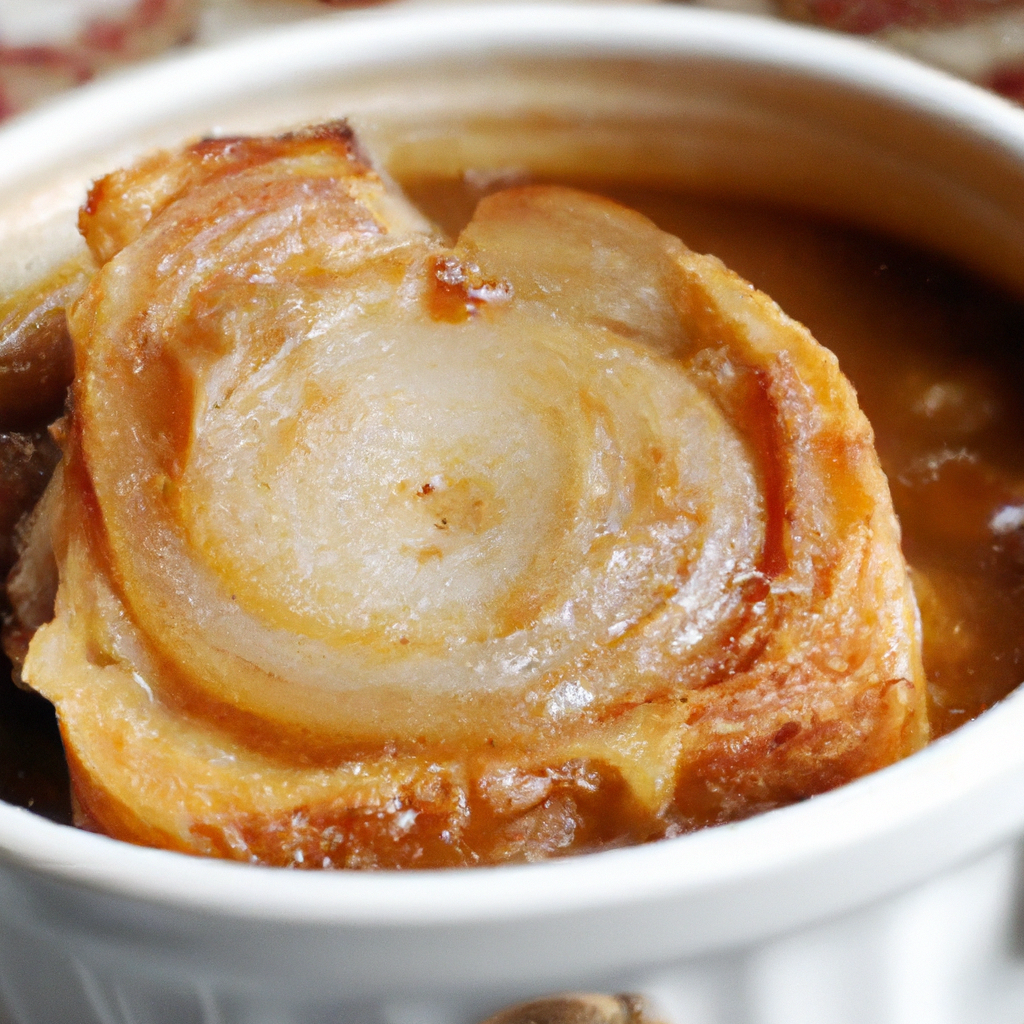French Onion Soup, a timeless classic loved by many, has a rich history that often leaves us wondering about its origins. This beloved dish, with its luscious caramelized onions, hearty beef broth, and melted cheese topping, has gained popularity around the globe. But have you ever contemplated where this delectable soup first came to be? Join us as we embark on a delightful journey to uncover the roots of French Onion Soup and discover the culinary tales that have shaped this iconic dish into the beloved masterpiece we know today.

Origins of French Onion Soup
Ancient Origins
French Onion Soup, known for its comforting flavors and layers of melted cheese and bread, has a rich and fascinating history that goes back centuries. While the exact origin of French Onion Soup is unknown, its roots can be traced back to ancient times.
The Middle Ages
During the Middle Ages, onions were widely cultivated and praised for their long shelf life, making them a staple ingredient in many European cuisines. French onion soup likely originated in the 18th century when King Louis XV of France was served a soup made from onions and beef broth. This soup was simple and hearty, offering warmth and sustenance during harsh winter months.
The French Revolution
The French Revolution, which began in 1789, played a significant role in the popularity and evolution of French Onion Soup. As the French society underwent radical changes, the soup became a symbol of resilience and resourcefulness. Onions were readily available and affordable, making French Onion Soup a beloved dish among both the aristocracy and the common people.
Traditional Ingredients
Onions
Onions are the star ingredient in French Onion Soup. They provide a robust and sweet flavor as they are caramelized during the cooking process. The long and slow cooking allows the onions to soften and develop a deep golden color, adding rich flavors to the soup.
Beef Stock
The base of French Onion Soup is typically made with homemade beef stock. The stock is simmered with bones, vegetables, and herbs for a long period to extract the rich flavors. The beef stock adds depth and richness to the soup, complementing the sweet and savory flavors of the onions.
Bread
Bread is an essential component of French Onion Soup. Traditionally, a baguette or crusty bread is sliced and toasted before being placed on top of the soup. The bread soaks up the flavorful broth and becomes slightly softened, adding texture and substance to the dish.
Cheese
Cheese, most commonly Gruyère or Emmental, is the crowning glory of French Onion Soup. Generously grated and melted on top of the soup, the cheese forms a golden crust that adds a creamy and indulgent element to each spoonful. The combination of the cheese and bread creates a delightful contrast of textures.
Regional Variations
Lyonnaise Style
The Lyonnaise style of French Onion Soup is known for its rich and deeply flavored broth. It often includes a splash of white wine, which enhances the complexity of the soup. The cheese topping in the Lyonnaise style is typically a combination of Gruyère and Comté, renowned cheese varieties from the region.
Parisian Style
In the Parisian style of French Onion Soup, the emphasis is on simplicity and elegance. The broth is typically clear and less rich, allowing the flavors of the onions to shine. Parisian-style French Onion Soup also often includes the addition of bone marrow, adding a luxurious mouthfeel to the dish.
Norman Style
The Norman style of French Onion Soup stands out for its use of apple cider. The cider, a specialty of the Normandy region, gives the soup a hint of sweetness and acidity. It pairs perfectly with the onions and adds a unique twist to the traditional recipe.
Provençal Style
Provençal-style French Onion Soup takes inspiration from the sunny region of Provence. It often incorporates thyme and bay leaves into the broth, infusing the soup with aromatic flavors. Provençal-style French Onion Soup may also include toppings such as black olives or Herbes de Provence for a touch of Mediterranean flair.
Culinary Influence and Popularity
French Cuisine
French Onion Soup holds a special place in the heart of French cuisine. It is considered a quintessential dish, representing the rustic and comforting nature of French cooking. The soup’s popularity in France has stood the test of time and continues to be cherished as a culinary gem.
International Spread
French Onion Soup’s reputation has transcended borders, gaining popularity around the world. It has become a favorite in many countries, particularly in North America. French bistros and restaurants serve this beloved soup as a classic, comforting choice for both locals and visitors alike.
Iconic Status
French Onion Soup has achieved iconic status within the culinary world. With its layers of oniony goodness, gooey melted cheese, and crusty bread, it has become synonymous with cozy comfort food. Its presence on menus and in cookbooks solidifies its place as a timeless classic.

Recipe Evolution over Time
17th and 18th Centuries
In the 17th and 18th centuries, French Onion Soup began to evolve, with chefs experimenting with different ingredients and techniques. Cream and eggs started making appearances in some recipes, giving the soup a richer and creamier texture. However, the essence of the soup remained true to its roots – a warm, hearty dish that showcased the natural sweetness of onions.
19th Century
During the 19th century, French Onion Soup experienced further refinement and variations. Some recipes called for the addition of flour to thicken the soup, while others experimented with the choice of cheese toppings. Despite these adaptations, the essence of French Onion Soup remained beloved and cherished by all who partook in its comforting flavors.
20th Century and Beyond
In the 20th century, French Onion Soup continued to evolve, reflecting the changing culinary trends. Modern adaptations offered vegetarian and vegan options, replacing beef stock with vegetable stock and using plant-based cheese alternatives. Creative twists, such as adding caramelized apples or mushrooms, emerged as chefs sought to put their unique spins on this classic dish. Gourmet variations with premium ingredients, such as truffles or foie gras, also became popular among culinary enthusiasts.
Modern Adaptations
Vegetarian and Vegan options
As vegetarian and vegan lifestyles gained prevalence, French Onion Soup recipes adapted to accommodate these dietary preferences. Vegetable broth or mushroom broth replaced beef stock, providing a rich and flavorful base. Vegan cheese alternatives, made from nuts or soy, offer a delectable melted topping that still captures the essence of the traditional dish.
Creative Twists
Chefs and home cooks have embraced their creativity by adding twists to the classic French Onion Soup. Some variations include the addition of different types of onions, such as shallots or red onions, to add complexity to the flavors. Others experiment with infused broths, introducing new herbs and spices for a unique taste experience. These creative twists allow individuals to put their own personal stamp on this beloved soup.
Gourmet Variations
French Onion Soup has also attracted attention from gourmet chefs looking to elevate the dish to new levels of sophistication. By incorporating gourmet ingredients like truffles or foie gras, these adaptations offer a luxurious and indulgent take on the classic. These gourmet variations cater to those seeking a truly refined and unforgettable culinary experience.

Cultural Significance
Comfort Food
French Onion Soup has become an iconic comfort food, providing warmth and solace with every spoonful. Its robust flavors and combination of textures create a sense of familiarity and coziness that transcends cultural boundaries. Whether enjoyed on a cold winter’s day or during moments of nostalgia, French Onion Soup brings comfort to people across the globe.
Association with France
French Onion Soup is deeply intertwined with French culture and gastronomy. It represents the rustic charm and culinary expertise that France is renowned for. The soup’s association with France has become a source of national pride, and it is often served in traditional French restaurants as a symbol of the country’s rich culinary heritage.
Dining Etiquette
French Onion Soup is not just a dish; it is an experience intertwined with dining etiquette. The proper way to enjoy French Onion Soup is to delicately break through the melted cheese crust with a spoon and savor the flavors beneath. It is a moment of culinary delight that showcases the elegance and sophistication of French dining traditions.
Health Benefits
Antioxidant Properties
Onions, a key ingredient in French Onion Soup, contain antioxidants that help protect the body against harmful free radicals. These antioxidants, such as quercetin and sulfur compounds, have anti-inflammatory properties and may contribute to overall health and well-being.
Nutritional Value
French Onion Soup provides essential nutrients as part of a balanced diet. Onions are a good source of vitamins C and B6, as well as dietary fiber. The beef stock adds protein and minerals, while the bread and cheese provide carbohydrates and calcium.

How to Make French Onion Soup
Ingredients
- 4 large onions
- 4 tablespoons butter
- 4 cups beef stock
- 1 cup white wine
- 1 baguette
- 2 cups Gruyère or Emmental cheese, grated
Preparation Steps
- Slice the onions thinly.
- In a large pot, melt the butter over medium heat.
- Add the sliced onions and cook, stirring occasionally, until caramelized and golden brown.
- Add the white wine to the pot and simmer for a few minutes to deglaze.
- Pour in the beef stock and bring to a boil.
- Reduce the heat and let the soup simmer for about 30 minutes for the flavors to meld together.
- While the soup is simmering, slice the baguette into rounds and toast them.
- Once the soup is ready, ladle it into individual oven-safe bowls.
- Place a few slices of toasted baguette on top of each serving and sprinkle with grated cheese.
- Broil the soup under a hot oven until the cheese is melted and bubbly.
- Serve hot and enjoy the comforting flavors of French Onion Soup.
Enjoying French Onion Soup
Presentation
Presentation is key when serving French Onion Soup. The soup is traditionally served in individual oven-safe bowls, with the melted cheese crust bubbling on top. The golden-brown cheese and the steaming soup beneath create an inviting sight that awakens the taste buds.
Accompaniments
French Onion Soup pairs well with a variety of accompaniments. A side of fresh baguette or garlic bread is perfect for dipping into the savory broth. A crisp green salad, dressed with a tangy vinaigrette, offers a refreshing contrast to the rich flavors of the soup. And, of course, a glass of red wine, such as a Bordeaux or Burgundy, complements the meal and completes the dining experience.
French Onion Soup, with its ancient origins and evolving adaptations, has become a cherished classic in the culinary world. Its comforting flavors, rich history, and cultural significance make it a beloved dish that bridges geographical and cultural divides. Whether enjoyed in a Parisian bistro or prepared at home, French Onion Soup is sure to warm both the body and soul, providing a taste of France’s culinary heritage in every spoonful.

